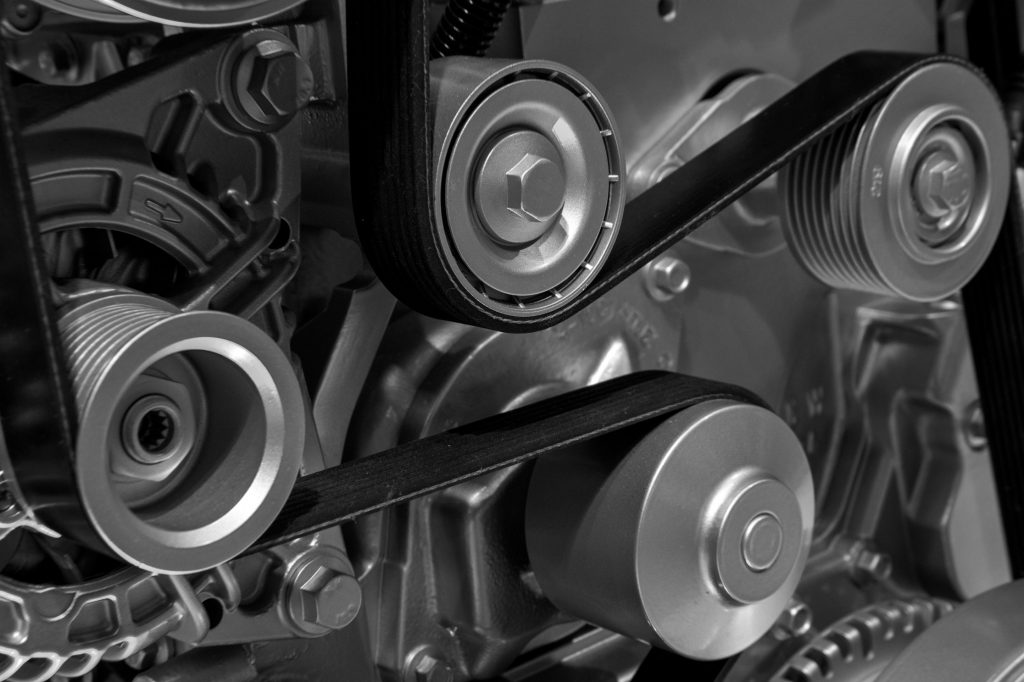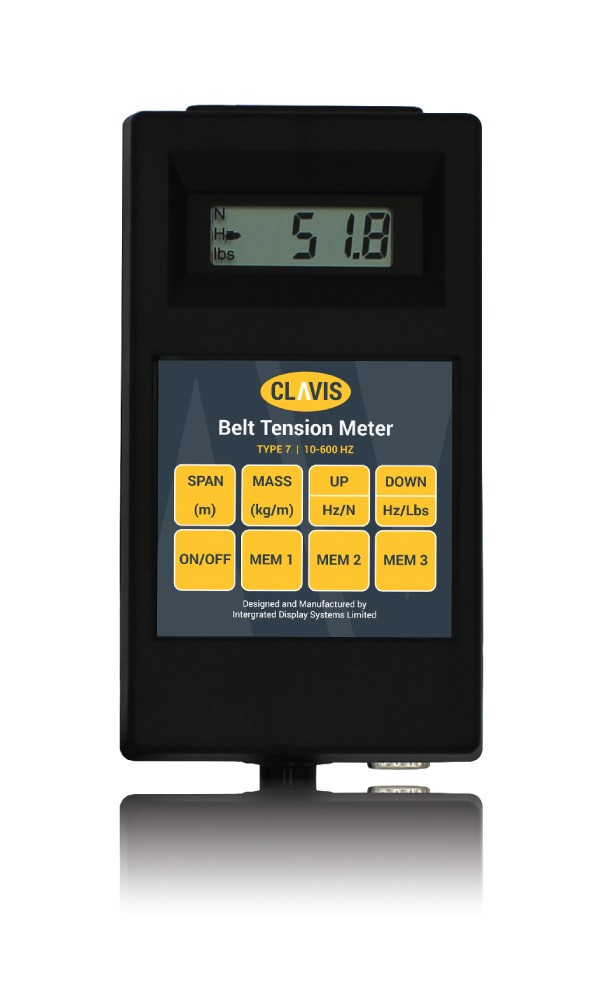We’ve talked frequently about tensioning smaller industrial belts, and choosing the right belt tension measuring instrument to reach the nooks and crannies in smaller systems — like electric vehicle engines or 3D printers. But what about large industrial belts? Here, I explain why proper belt tension is crucial for keeping larger machines running efficiently.
Proper tensioning is crucial for efficient drive belt operations in the types of large machines with high-powered motors you’d find in processing or chemical plants. Not only do these belts sometimes perform in the most aggressive applications and environments, but their sheer size makes it more challenging to take effective measurements.
A V-belt transmits energy between two components. Conventional V-belts, the most common type that have been around the longest, can be up-to one-and-a-half inches wide, and lengths of around 50 inches are not uncommon. SPB Metric V-Belts generally have a top dimension of 17 millimetres, a height of 13 millimetres and a length range of 1500 to 8000 millimetres.
“Proper tensioning is crucial for efficient drive belt operations in large machines — but their sheer size makes it more challenging to take effective measurements.”
These belts are designed to transmit up-to twice the horsepower of classic belts with the same top and bottom dimensions. Take the Gates Predator® V-belt, for example, which is growing more popular as it can drive equal or greater power capacity with nearly half the width or weight of a standard V-belt drive. According to Gates, the belt can reduce drive costs by up to 37 per cent.
So, a lot of time and money rests on these belts performing effectively.
Proper belt tensioning
As stated in the Encyclopaedia of Materials: Science and Technology, the most important factor in the successful operation of a V-belt drive is, without a doubt, proper belt-tensioning. Improper tensioning is also the number one cause of a power transmission belt failure — but why exactly?
We can determine signs of improper belt tension or misalignment in V-belts by monitoring their unique frequencies.
If the belt tension is too loose, this can result in slippage, rapid belt or sheave wear and energy and productivity can be lost as a result. On the other hand, too much tension can cause excessive strain on the belt, or other machine components such as bearings and shafts, leading to premature wear of these components.
That’s why, for long and efficient belt operation, you must learn how to properly tension a V-belt using a belt tension measuring instrument.
Measuring by frequency
We can determine signs of improper belt tension or misalignment in V-belts by monitoring their unique frequencies. There is, in fact, a direct relationship between belt tension and the belt’s natural frequency of vibration, not unlike when musician plucks or strums a string on a guitar or violin. Put simply, the belt’s vibration can indicate its tension setting — but you need the right belt tension measuring instrument to read this properly.
“There’s a direct relationship between belt tension and the belt’s natural frequency of vibration, not unlike when musician plucks or strums a string on a guitar or violin.”
The belt tension meter itself is a hand-held device with two elements, an optical sensor and a meter. There are two main ways to detect belt vibration, with either a an optical or acoustic sensor head, which my colleague Andrew, managing director of Clavis, covered in his recent blog.
Andrew’s blog mentioned the example of a customer that came to us with a requirement to measure a Gates Predator Belt that was being used in a large chemical plant. The vibrational frequencies of these kinds of belts can be anywhere in the range of ten to 400 hertz (Hz), with the option to measure the side of the belt, too, if this gives a more accurate reading. In that instance, the customer used the sensor head with Clavis’ Type 4 Belt Frequency Meter.
The Type 4 has a simple ON/OFF keypad button interface. If you want to take more varied readings, there’s Clavis’ Type 7, our most advanced belt meter. The Type 7 measures in Hertz (Hz), Newtons (N), and Pounds (Lbs). This makes the tool suitable for all belt types including toothed timing belts — and also poly V belts, which are like standard V belts but with multiple ‘ribs’ across the width of the belt.
Image: The Type 7 is Clavis’ most advanced belt meter that measures in Hertz (Hz), Newtons (N), and Pounds (Lbs).
In addition, the Type 4 and Type 7 each have a frequency measurement range of 10 Hz to 600 Hz. They give a more consistent and accurate reading of unique frequencies than other belt meters — thanks to Clavis’ in-depth testing when we develop our products. For the large chemical plant, we recommended an optical sensor head that — aside from being an excellent choice for those harder-to-reach spots, like 3D printers as I’ve mentioned — can also be the best choice if you want to go large.
Article by Mark Errington



